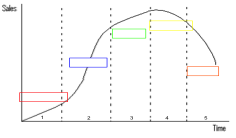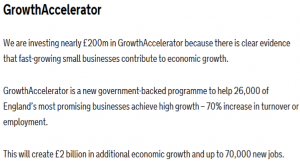Research and Development (R & D) and Innovation
Research and Development (R & D) and Innovation
The most successful firms pursue innovation (e.g. Apple and Samsung) and it becomes part of their corporate culture (e.g. Google).
Comprehend how R & D / Innovation can be used to increase market power
-
Research & Development is another way of increasing market power
-
What competitive advantage can innovation help you attain compared to your competitors??
-
It can serve to differentiate the product from rivals, potentially increasing customer loyalty and therefore total revenue via repeat purchases. A good example is the smartphone industry where ‘creative destruction’ in this dynamic market is rewarded.
Product life cycle and extension strategies aided by R & D / Innnovation
-
Every product will only last for so long – i.e. they have a life cycle.
-
The product life cycle assumes that all products follow the same pattern.
-
Definition - It shows the stages a product passes through from its development to its withdrawal from market.
Prior – Research and development
Takes place before the product is put on the market at all. MARKET RESEARCH will have been carried out on the product and it would have been tested (in the case of mechanical or scientific products). An expensive stage, as no income is being received.
Stage 1 – Introduction
Emphasis is placed on marketing and promotion in order to make the public aware and create desire. Sales would be slow but should increase rapidly if marketing has been successful.
The product would still not be making a profit, as sales would not cover research and development costs yet.
Sales?_ Slow as product is just launched_
Advertising?_ Vital – informative advertising to promote the product’s specification_
Price?_ Skimming if justifiable, product is unique and in demand, profit maximise!_
Stage 2 – Growth
Sales grow rapidly as most people would be aware of the product; tried it and thus customer loyalty will have developed. Often at this stage prices are reduced as ‘copy-cat’ competitors start to provide competition with similar products. The product should be making a profit.
__Sales: ____Popularity is growing and sales are rocketing.
__Advertising: ____Switch to persuasive advertising to boost sales, persuade people to buy the product.
__Price: ____Still skimming as unique and lack of competitors.
Stage 3 – Maturity. Competitors enter the market!
Sales levels are maintained and the product has an established place in the market. Competition becomes more intense at this stage, and it is difficult to increase the volume of sales more.
Maturity stage is lengthy for household products, though short for fashion as the next fashionable item takes over. Profits are highest as sales have been stabilised.
Though a good business realises that it needs to begin research and development into a new product.
__Sales: ____Slowing down as competitors enter the market.
__Advertising: ____Still important, used to fight off the competitive via a new campaign.
Price:_ Switch to competitive as copycats enter the market._
__Extension Strategies __can be employed to prolong this stage:
-
Product modification
-
Price reduction, advertising, etc.
-
Launch in new markets
Stage 4 – Saturation
Sales have been pushed as far as possible and new customers cannot be found. At this stage the weakest products will drop out of the market, which may prolong the saturation stage for other businesses.
Profits would be healthy, but not growing.
S_ales:_Peaked and dropped, competitors winning the battle.
__Advertising: ____Reduce, save the budget for the next product as it readies for launch.
Price: __ Still competitive but will switch to cost-plus later in the stage.
Stage 5 – Decline
Final stage in the life of a product. Sales have fallen to such an extent that they are not covering the manufacturing costs and the product is therefore unprofitable. Further advertising or price reductions would not be successful and the product would be withdrawn.
For some products this stage is lengthy – e.g. bed-time drinks. For others it is short – e.g. fashion items.
A business which has prepared for this stage will have a second product ready for introduction to the market to replace the declining product.
Explain the role of government funding in R & D / Innovation
-
R&D is expensive and never enough is undertaken so the state has to step in and provide funding (1.5 – market failure! Merit good!)
-
Grants/subsidies are available (gov intervention!) are available from the government for R&D projects
Examples on a local scale, national scale, and EU level:




